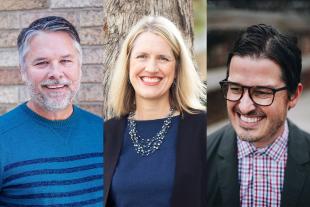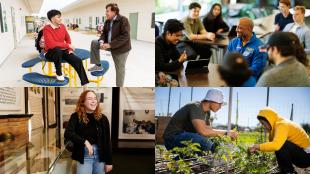Zoom Gatherings and Virtual Hikes: How One Professor Builds Community When Students are Remote
“Hey TJ, what’s it like in North Carolina?” Nishi Rajakaruna asks, peering into the computer screen and waving.
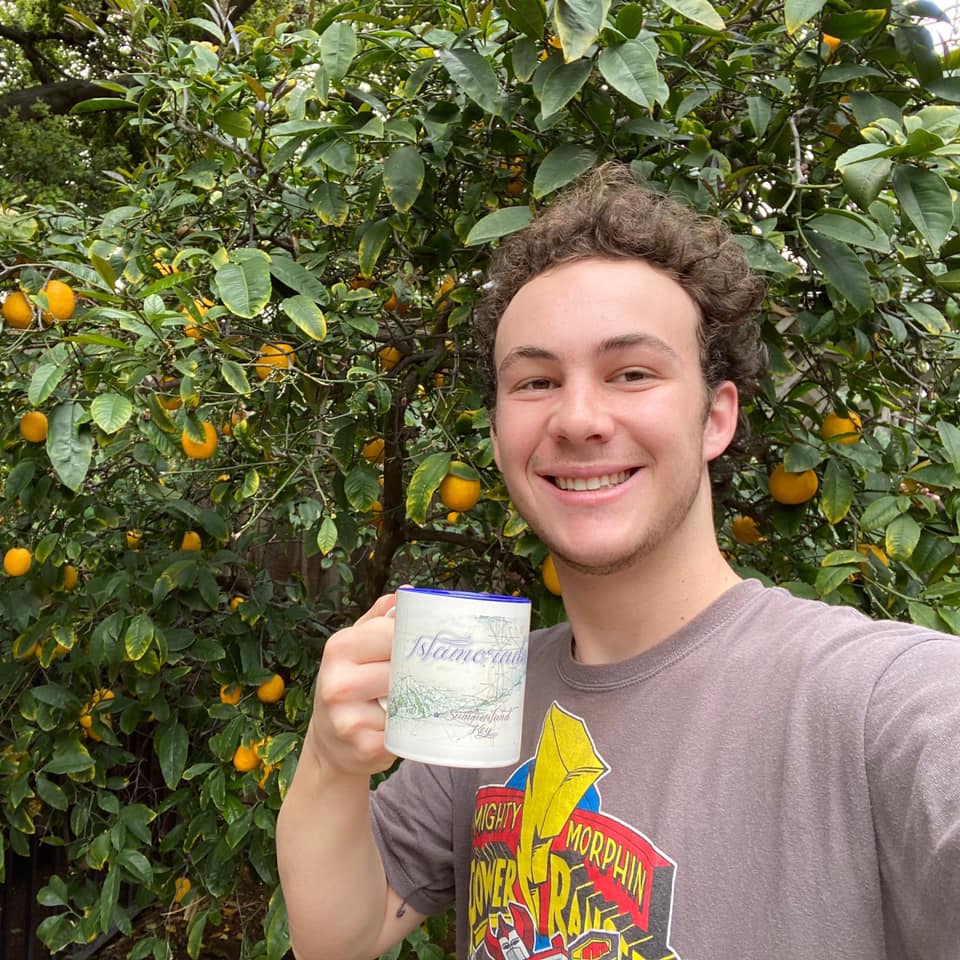
TJ Samojedny, a first-year architecture student, waves on the screen.
“I did not expect this many people to pop up. This is excellent!” Rajakaruna says, smiling as more students appear in the Zoom window one evening in April. He continues to greet the students as they show up and ask them how they are doing.
Rajakaruna, an associate professor in Biological Sciences and the Faculty in Residence at yakʔitʸutʸu, is hosting another tea night, as he usually would in the yakʔitʸutʸu community center.
But this time, the dozens of students who joined were scattered across the country, tuning in to this communal gathering via Zoom.
That night, Rajakaruna had a guest: Kirstin Sherritt of Secret Garden, a local tea shop. Sherritt, a Cal Poly alumna, spoke to the group about her business.
The group, which at one point numbered approximately 50 people, chatted for more than two hours: about plants, their setups at home and the types of tea they were drinking.
While the event was winding down, Rajakaruna checked in.
“How are you guys handling the stress and isolation?” he asked. “Are you figuring out how to be positive and productive during this time? Any strategies you’d like to share?”
“Lots of hikes!” one student said, as the others smiled and laughed. Rajakaruna closed out the event by asking everyone to stay safe and healthy.
“I’ll be around if you want to stick around,” he said.
Rajakaruna’s virtual events began almost as soon as the pandemic started impacting Cal Poly in mid-March.
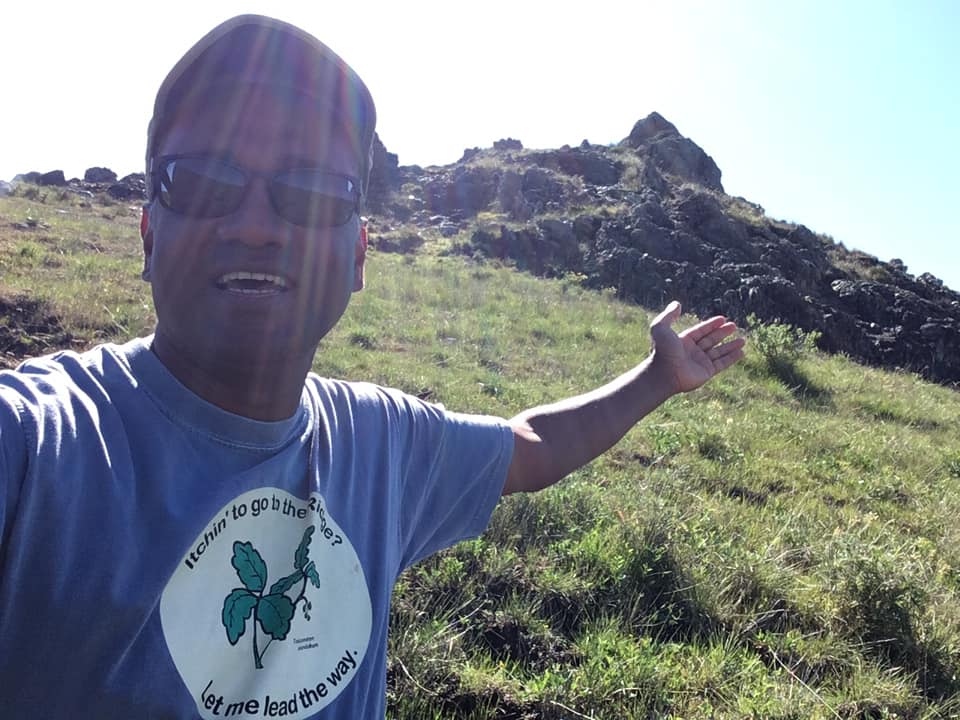
One Sunday morning, he sent out a message on his GroupMe, which includes about 300 students, saying that he was going on a hike and asking if they wanted to join.
It became the first virtual gathering of the Plants, Peaks and Pals Club, which Rajakaruna started last year. Though the group can’t hike together at the moment, they take pictures of themselves on their separate hikes and talk about them together.
“I’ve tried to give people some continuity by trying to do virtual hikes on Sundays and tea nights,” Rajakaruna said. “I’m also trying to figure out how I can be available to them in other ways that they may need me right now.”
Rajakaruna said he always has his phone on him, and has made himself as available as possible to students who need to talk. He has Zoomed with several students who were roommates in yakʔitʸutʸu, showing them the doors of their rooms and listening as they commiserate with each other.
“I’m available for students to meet with whenever they need to talk to somebody,” Rajakaruna said. “Students are used to having some kind of a plan in terms of knowing what they’re going to do next week and living in limbo, I think, is the hardest.”
He’s been hearing more from students who have anxiety over what’s next, and tries to be an encouraging presence for them by helping them find ways to cope and build their confidence about the future.
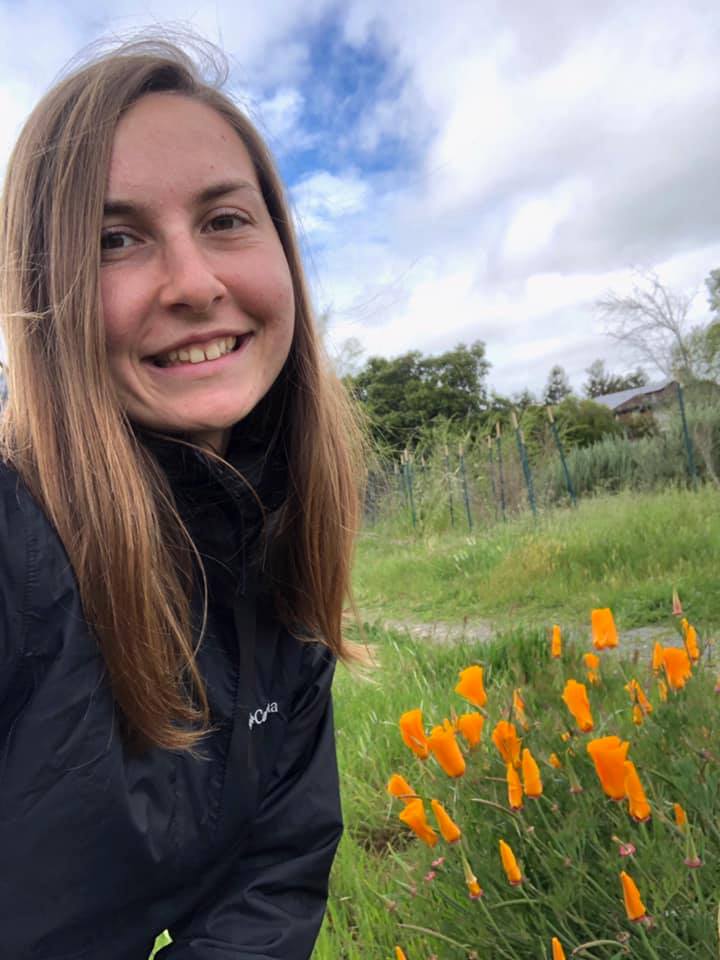
“I’m trying, through example, to show students that things change, but we don’t have to stop our lives. We can still do what we love, like hiking or drinking tea together, even if we’re doing those things apart,” he said. “That kind of consistency is how you can keep students somewhat positive about what’s ahead and at the same time, adjust to this new world.”
Rajakaruna, who is still living in yakʔitʸutʸu, says he misses living with others, but has started to get to know some of the students still living on campus through his twice-daily walks. He said he hopes to find ways to connect with them, and bring some positivity to the experience of being on-campus during this time.
He said that in addition to virtual events, he’s thinking about possibly putting together some activities they can all do safely, like a scavenger hunt or a socially-distanced walk to see interesting plants and farm animals on campus.
“One of my main objectives is to keep the community together so they don’t lose their sense of belonging at Cal Poly or their sense of community,” Rajakaruna said. “It’s the best I can do under the current circumstances and I’m trying to figure out the most effective ways to connect with students.”

